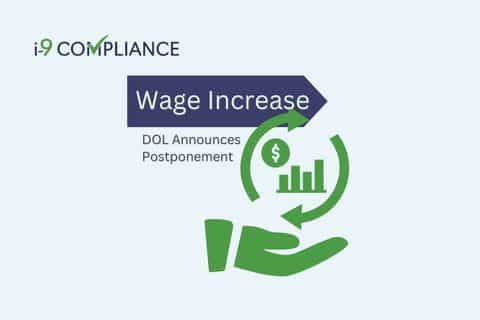DOL Announces Postponement of Prevailing Wage Increase

July 6, 2023
The Departments of Homeland Security, Labor, and State have issued new regulatory agendas for each agency’s plans and timelines for the upcoming months. One notable development will have a positive impact on employers. According to the agencies, the current administration intends to defer the publication of a set of rules. This deference would raise the wages of H-1B visa holders and lawful permanent residents.
This announcement may come as a relief for many employers. Businesses across the country have seen massive layoffs of foreign national workers, especially H-1B workers. Initially, a new proposal to increase prevailing wages for the H-1B, H-1B1, E-3, and PERM programs would have published in September 2023. However, the Department of Labor’s (DOL’s) latest regulatory agenda has pushed back this date.
This change is not the first time the DOL attempted to introduce a rule increasing prevailing wages in recent years. For example, the previous administration had set a proposed rule to accomplish this task in November 2022. However, with the DOL’s consent, a federal court vacated the regulation in 2021. The DOL received feedback from a request for public comments in 2021 and used these responses to improve the new rule.
Unfortunately, the latest attempt has seen another delay after its removal from the current agenda. This proposal will appear as a long-term plan due to its placement on the long-term action list. As such, the agencies have scheduled the publication of a proposed rule for June 2024. A 30-60 day period for public comments typically follows publications. Afterward, the proposal could undergo several more months of changes and finalizing.
The Department of Homeland Security (DHS) also revealed similar days in the regulatory plans. These delays concern plans to increase filing fees for immigration applications and petitions with the U.S. Citizenship and Immigration Services (USCIS). The changes involving H-1B workers have faced significant criticism from businesses, causing the delay. As such, the DHS plans to publish a final rule in March 2024. The extent of these increases remains uncertain.
Employers should stay informed about these and many other changes to maintain compliance. One particular area of concern is the constantly evolving landscape for Form I-9. The best way to remain in compliance with the Employment Eligibility Verification process is to incorporate an electronic I-9 management system with E-Verify integration. This tool will help to ensure uniform compliance with each form.
Ensure compliance today by switching to an electronic I-9 management tool with I-9Compliance.